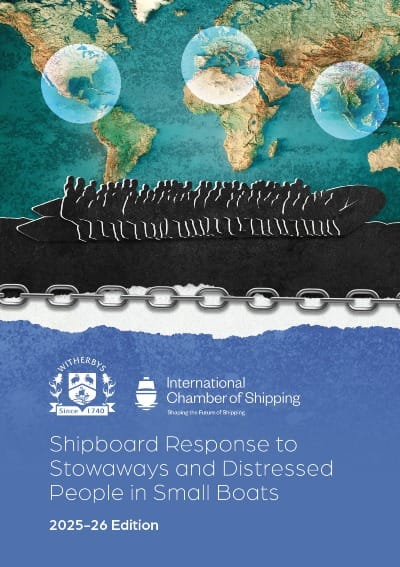International Chamber of Shipping (ICS) Publications in collaboration with Witherbys Publishing issued an article addressing key concerns in maritime security regarding stowaways and individuals rescued at sea.
Stowaways are a persistent issue impacting ship security, crew safety, and incurring significant costs for shipowners and insurers. Global information on stowaways is incomplete, and incidents are under-reported, but financial costs per incident continue to rise, amounting to millions of US dollars annually. In recent years, increasing global sea migration has made encounters with individuals in difficulty aboard small or overcrowded boats more frequent for seafarers worldwide.
The Challenges of Irregular Maritime Movement
Examples of "irregular" maritime movement vary, from a lone stowaway hiding on a cargo ship to hundreds of individuals crammed into large, open boats. Once aboard a "host" ship, stowaways and rescued individuals present common security risks alongside specific challenges and responsibilities.
The disembarkation and repatriation of stowaways can be complex and time-consuming. As such, the primary focus for merchant shipping is preventing stowaways from accessing vessels in the first place. Although stowaways can board from any port, certain regions and ports are known for higher risks. New trends, however, continue to emerge. For instance, between 2020 and 2023, several incidents involved stowaways hiding in the open rudder trunks of cargo ships on routes between Africa and the Canary Islands. Ferries and RoRo freighters on short-sea routes in Europe have also experienced increased stowaway activity.
Mass Migration and Its Maritime Implications
The phenomenon of mass migration by sea shows no signs of abating, with seafarers frequently encountering individuals in distress along migration routes. These boats are often overcrowded, poorly provisioned, and lack basic safety equipment. "Irregular" migrants travel via unauthorized or illegal routes, and their ranks may include refugees and victims of human trafficking.
In the Mediterranean, while the overall number of irregular crossings has decreased since its 2015 peak, specific routes see fluctuations based on local factors. Migrants depart from the coasts of Africa, Lebanon, and Turkey, aiming for Italy, Spain, and Greece, with smaller numbers proceeding to other European destinations. Similarly, significant irregular migration occurs elsewhere, including displaced Rohingya fleeing Bangladesh, migrants crossing from the Caribbean and Mexico into the United States, and those traveling to Yemen from the Horn of Africa in search of work.
For example, the UK Home Office reported 29,437 arrivals via the English Channel in 2023, crossing in 602 small boats. By October 26, 2024, this figure had already been surpassed, underscoring the persistent risks and challenges of such journeys. Tragically, thousands attempting these crossings have died over the years.
Seafarers’ Responsibilities and Challenges
Seafarers often face unavoidable situations involving stowaways or distressed individuals. Whether covertly boarded or rescued at sea, these unauthorized individuals pose security and logistical challenges. International conventions, such as the UN Convention on the Law of the Sea (UNCLOS), require shipmasters to assist people in distress at sea, except when doing so would endanger their own ship, crew, or passengers. This obligation is mirrored in the SOLAS and SAR Conventions.
Merchant vessels, however, are often ill-equipped to accommodate large groups of distressed individuals, placing a heavy burden on seafarers to manage them safely and securely until transfer. Rescued individuals often depend entirely on the ship and its crew for survival, compounding the crew’s responsibilities.
New Guidance for Managing Maritime Risks
The newly released ICS/Witherby publication, Shipboard Response to Stowaways and Distressed People in Small Boats - 2025-26 Edition, provides comprehensive advice to shipowners, officers, and crews on handling these challenging situations. Covering safety and security procedures, it ensures compliance with international regulations and offers practical guidance on legal obligations, responsibilities, and industry best practices.

This publication also highlights current trends, key concepts, and recent developments, supplemented with case studies. It includes bridge cards summarizing key points as quick reference aids for ship bridge teams. While primarily aimed at officers and crew, the publication may also interest NGOs, P&I Clubs, governments, and other regulatory authorities.
Learn more about this resource at Witherbys Shipboard Response Guide.

Sign up for our newsletter
Your most up-to-date maritime regulations news
It's free. No spam. Cancel anytime.










Related News
Most important regulatory news published in the last week
Dec 24, 2024
Most important regulatory news published in the last week
Sep 24, 2024
ICS has introduced a new guide for reducing GHG emissions in shipping
Sep 17, 2024